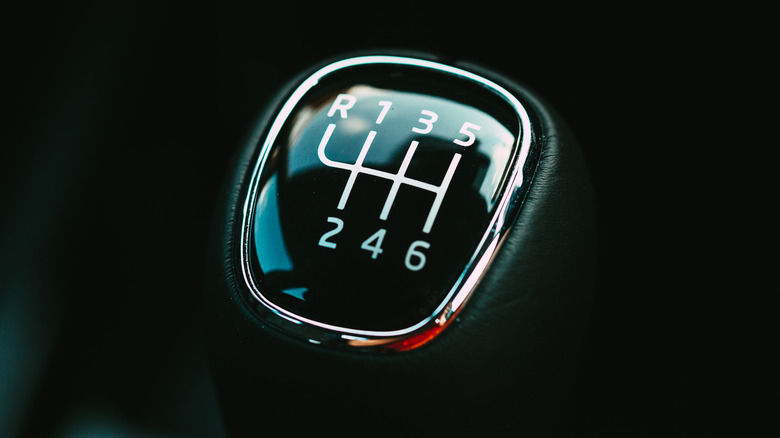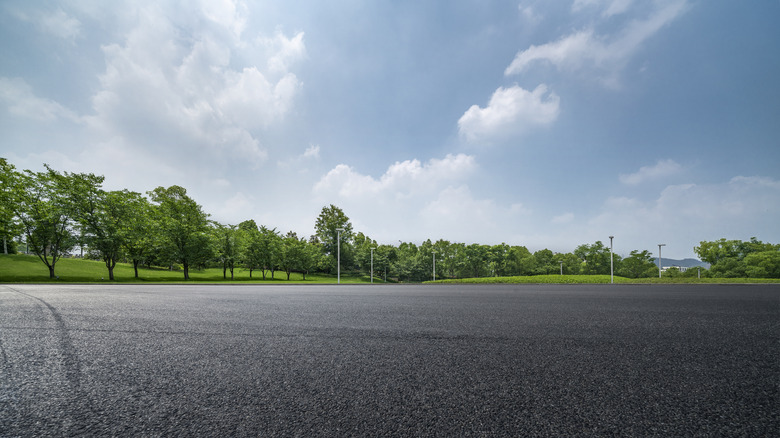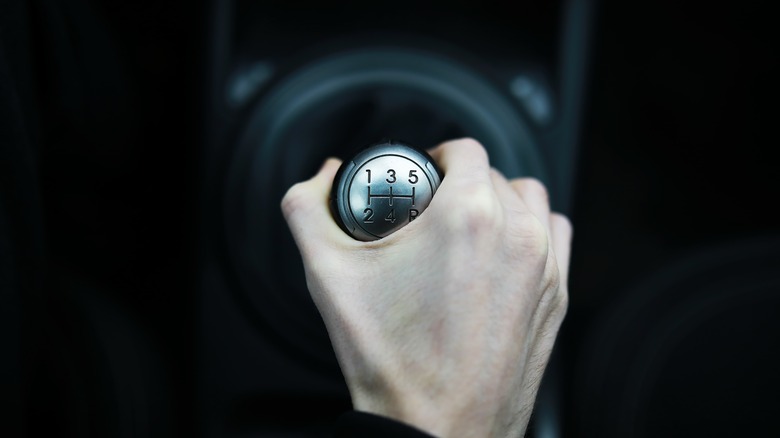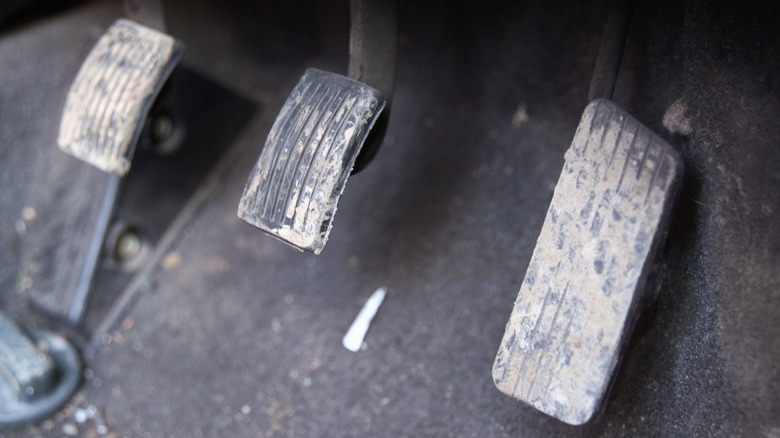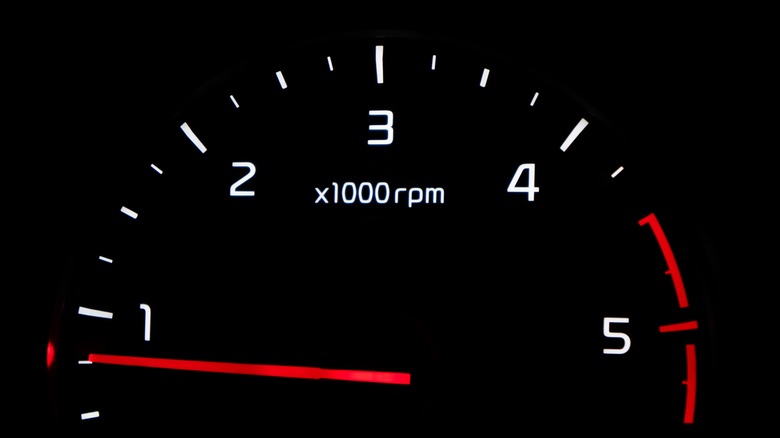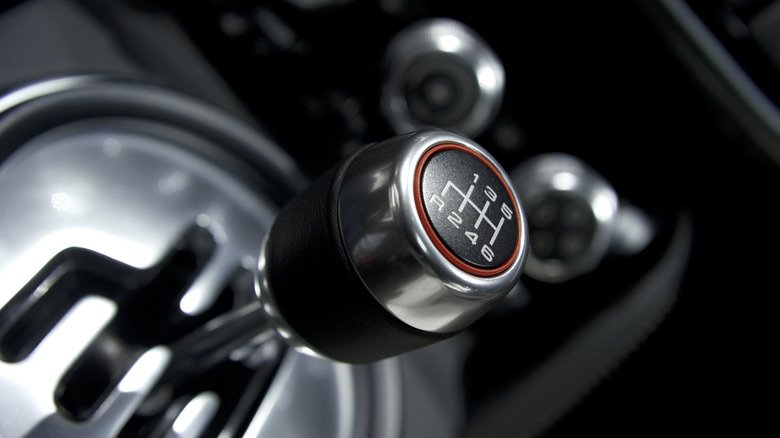6 Beginner Tips To Learn Manual Transmission Shifting
The manual transmission is starting to go the way of the dodo, although there are still several new cars, trucks, and SUVs you can buy that have a stick shift — and, of course, used options abound. SlashGear has already outlined the pros and cons of manual vs. automatic transmissions, but if you opt for a manual transmission vehicle, it can be an intimidating challenge to take the road while still learning the three-pedal shuffle. Once you master this skill, you will enjoy a better connection with your car and the road, as well as the ability to hop into any car and drive it.
There are many factors that make manual transmissions worth learning. For example, knowing how to drive a stick is particularly handy if you visit Europe, where 80% of cars are still equipped with manual transmissions. We're here for you to help provide a lesson in two-foot driving, a lesson my father insisted on imparting to my sisters and me when we were getting ready to take our driver's tests. Thirty-five years later, I still strongly prefer driving a stick shift, although finding one has become harder and harder as the years go by.
Find a large empty space to practice
The first thing you'll need to do after purchasing your manual-transmission vehicle is find a place to practice, and ideally, an experienced and patient stick shift driver to serve as an instructor. If you live in a rural area and there is a large empty field you can use without endangering children, livestock, or property, that is the best place to start. For suburban and urban dwellers, find an obstacle-free parking lot you can use when it is empty.
Schools, shopping centers, and athletic field complexes often have parking lots that are reasonably free of cars for hours at a time, offering you a chance to practice without interference. Find a large, empty, flat space and have your experienced friend drive you and the car safely to that spot until you are comfortable driving in traffic. It can also be helpful (if at times mildly embarrassing) to buy a "student driver" sticker or placard and display it on your car during the learning phase; this should encourage patience in other drivers.
Learn your vehicle's shift pattern while stopped
Before you even worry about coordinating clutch and gas pedal operation, you need to learn how to move your transmission from gear to gear. With the car parked, the engine off, and the emergency brake on, grab the shift lever firmly and move it between the various positions to get a feel for the proper motion and amount of force needed. You don't want to slam the lever into place; rather you should guide it gently and smoothly from position to position. The transition from second to third gear is tricky for many new drivers.
This requires a mainly forward motion with a slight divergence to the right. On many cars, shifting from fourth to fifth gears requires a more exaggerated movement to the right, but you'll get a feel for just how your car shifts after a little practice while stopped. Once you're comfortable shifting through all the gears in both directions, it's time to learn to manage the clutch pedal.
Find your clutch engagement point
While the engine is off, you can shift freely among gears, but when it's running, you need to use the clutch pedal to disengage the engine from the transmission. When fully depressed, the clutch separates these two components, essentially putting your car in neutral. You need to find the point at which your engine starts to move your car as you release the clutch; this is called the engagement point. Push the clutch to the floor, start your car, and put the lever into first gear. Release the clutch very slowly until you feel tension beneath your left foot — at this point, the car should begin to crawl ever so slowly forward.
Later on, you'll learn how to apply the proper amount of gas for various driving conditions, but at the beginning, you can just practice moving slowly from a stop in first gear without using the accelerator. As the clutch begins to engage and you creep forward, you'll be tempted to release the clutch pedal abruptly, but this will cause the car to buck and perhaps stall out. Eventually, you will get a feel for how to smoothly engage the clutch without giving you and your driving instructor unexpected spinal adjustments. When you have learned to get the car moving in first gear, try the same in reverse.
Learn your car's shift points
When you are comfortable getting your car going from a stop in first gear, you should try accelerating and driving in second and third gear in your safe, open practice space. An automatic transmission shifts gears automatically as engine revolutions increase. With a stick shift, that's your job. The tachometer will have the engine's maximum revolutions clearly marked (the "redline") but you should upshift before you rev the engine this high. As you gain experience, you'll learn to shift based on engine noise and vibration and won't have to look at the dashboard.
You should have a good feel for your car's engagement point by now. Start in first gear, and when the clutch is fully engaged, practice gently applying gas to accelerate. At first, upshift at 2,500 to 3,000 rpm, which should prevent stalling while leaving plenty of room below the redline.
When you reach this point, press the clutch down fully and shift into second gear. You don't have to be quite as gentle in releasing the clutch as you do when moving from a stop, but the smoother the better. It's also important not to "ride" the clutch by applying too much pressure for too long, as that will wear down the clutch disc and eventually cause the clutch to slip. Once you're comfortable shifting into second, try accelerating enough to shift into third gear. On most vehicles, this will be at neighborhood cruising speed.
Learn how and when to downshift
One advantage of a manual transmission is the ability to downshift and use the engine to slow the car, saving wear on the brakes. When you've gotten used to throwing your car into third gear, it's time to practice downshifting. You'll almost never want to downshift into first gear, so it's best to start by moving from third to second gear. Be careful — don't let a downshift send your tachometer past the redline. Exactly where these shift points are is something you'll have to learn on your own, as gear ratios and rev ranges differ among vehicles.
Get to third gear, then slow down until the engine is turning at about 2,000 rpm. That should be safe to downshift in most cars. Press the clutch down fully, take your foot off the gas, and shift from third to second. Release the clutch smoothly through the engagement point and allow the engine to slow the car. To come from a stop in second gear, just shift into neutral, release the clutch (no need to be gentle here — the transmission and engine won't engage), and use the brake to stop. Once you are comfortable moving from a stop to third gear and back to a stop, it's time to find a clear stretch of highway and explore the higher gears. Focus on smoothness: in addition to making for a more pleasant ride, it's one of many ways to improve your MPG with a manual transmission.
Starting on a hill can be tricky
One aspect of manual transmission driving that can be challenging even to experienced drivers is getting moving when your car is pointed uphill. You will roll backward during the moments between releasing the brake and engaging the clutch, and if you don't apply enough gas in response, your car will stall.
On cars with a hand-operated parking brake, it helps to engage the brake and hold your car in place as you get a feel for how abruptly you can release the clutch without stalling and how much gas you need to stay moving. Apply the brake just enough to stop your car from rolling backward — putting it on past this point will just make it more difficult to get going. As the clutch engages and you begin to move, gradually release the brake and clutch together and apply gas to accelerate.
Once you have a feel for the balance you need between the three mechanisms to get started on a hill, replace the use of the hand brake with a quick move of your right foot from the brake to the gas as you release the clutch. You'll want to release the clutch much more abruptly than when on a flat surface — this is why you need to apply gas to keep from stalling. While building these skills, keep in mind that there are some bad habits you should stop doing in your manual car – or, ideally, avoid developing those habits in the first place.
